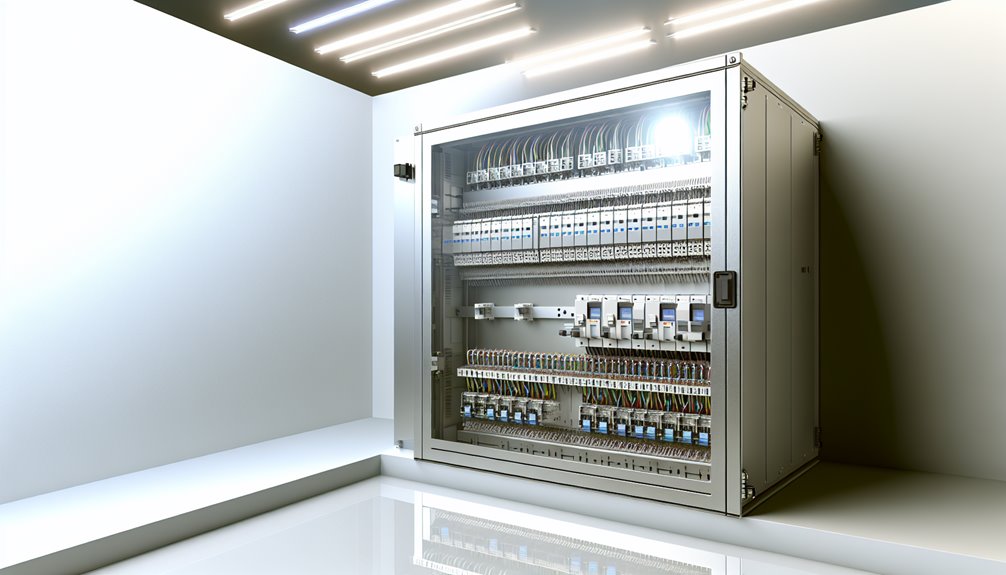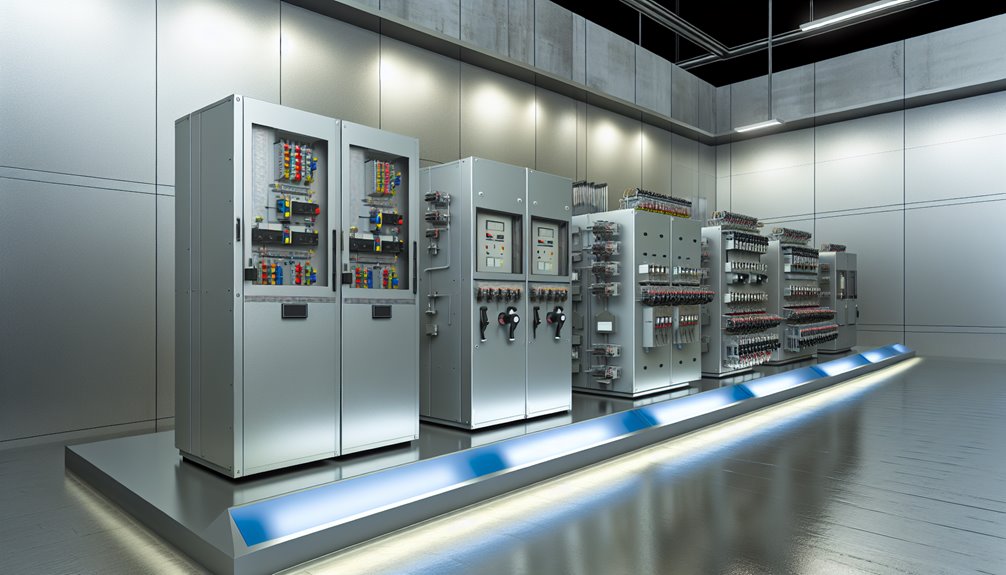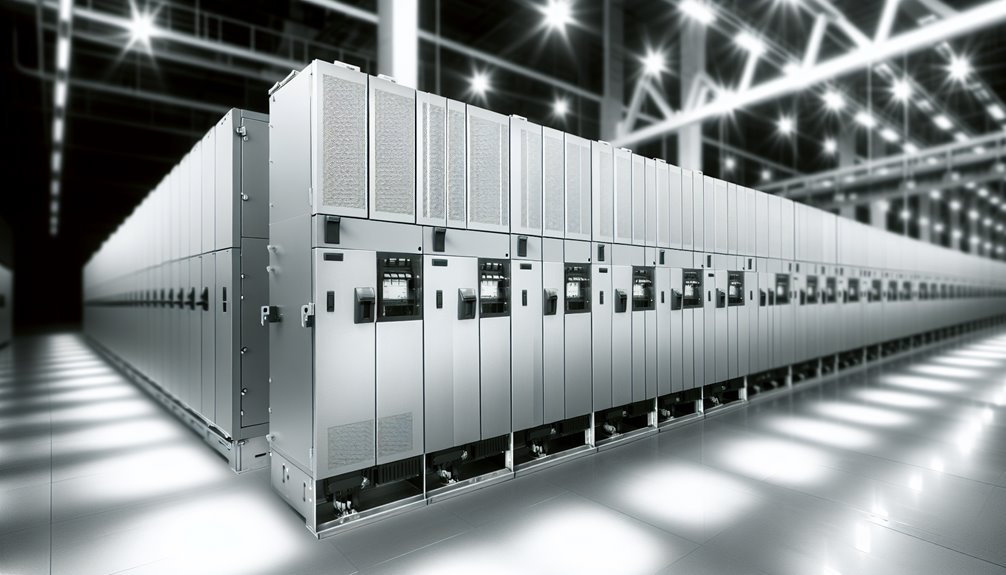
In today’s rapidly evolving world of power distribution, low voltage switchgear plays a critical role in ensuring safe, stable, and intelligent energy management across industries — from commercial buildings and infrastructure to manufacturing and data centers.
As a trusted pioneer with over 30 years of innovation, Conya delivers reliable, high-tech low voltage switchgear and integrated energy solutions that help our customers build smarter, more efficient electrical systems.
In this guide, we’ll explore what low voltage switchgear is, why it matters, how it’s designed and built, the standards it must meet, and how to select the right solution for your project.
Let’s dive in and discover how the right low voltage switchgear can power a safer and smarter future.

Low voltage switchgear refers to a set of integrated electrical components—such as circuit breakers, disconnect switches, relays, and fuses—designed to control, protect, and isolate electrical systems operating at voltages up to 1,000V AC or 1,500V DC.
It is a critical element of power distribution networks across industries, ensuring the safe and efficient delivery of electricity to end-use equipment.
Low-voltage switchgear:
As modern infrastructures rely more heavily on uninterrupted, efficient power systems, the importance of robust low voltage switchgear continues to grow. It provides:
At Conya, we specialize in designing and delivering intelligent, compliant, and customized low voltage switchgear solutions to meet the demands of today’s fast-evolving energy infrastructure.available where needed, making it an essential investment for both industrial and commercial applications.
Understanding the various types of electrical switchgear provides insight into their specific applications and functionalities across different voltage levels.
Electrical switchgear is categorized into low voltage, medium voltage, and high voltage classes, each serving distinct purposes.
Low-voltage switchgear, handling systems up to 1KV, is integral in regulating power on the low-voltage sides of distribution transformers, offering the switchgear benefits of enhanced safety and operational efficiency in diverse industrial applications.
Handling systems up to 1KV, low voltage switchgear ensures safety and efficiency in industrial power regulation.
Medium-voltage switchgear, operating from 1 kV to 75 kV, is prevalent in systems with motors and feeder circuits, ensuring reliable power distribution.
High-voltage switchgear, designed for controlling 75 kV or more, incorporates advanced safety features to manage the increased risks associated with high-voltage operations.

The arrangement of switchgear and its influence on power flow is a critical aspect of electrical distribution systems. Low-voltage switchgear employs intricate bus configurations that guarantee efficient power distribution.
Power flows through the switchgear via silver- or tin-plated copper bus, with vertical risers connecting breaker stabs to feeder breakers. Horizontal main bus links adjacent sections, facilitating seamless current flow. Runbacks extend from feeder breakers to cable compartments, providing termination points for load cables.
Adequate air gaps typically maintain insulation between bus phases; however, additional insulation is applied when necessary. Low-voltage power circuit breakers provide short-circuit and overload protection, utilizing air as the interrupting medium.
These systems accommodate a range of ratings, guaranteeing robust and reliable power distribution across various applications.
While examining the intricate framework of electrical distribution systems, it becomes evident that low voltage switchgear comprises several critical components essential for functionality and safety.
Among these, low voltage circuit breakers and molded case circuit breakers (MCCBs) play a pivotal role in circuit protection by automatically interrupting electrical flow during overloads or short circuits.
Essential switches allow manual or automatic control of electrical circuits, while offload electrical isolators guarantee safe maintenance activities.
High Rupturing Capacity (HRC) fuses provide additional protection by melting under excessive current, reinforcing electrical safety.
Enclosures and bus compartments safeguard these components, maintaining system integrity and compliance with safety standards.
Together, these elements guarantee seamless power distribution and robust protection across various electrical applications.

Building upon the detailed examination of low-voltage switchgear components, each element within the system serves a specific protective and operational function, crucial for mitigating the effects of electrical faults.
The incomer stands as a critical line of defense, withstanding unusual electric currents and interrupting maximum fault currents, necessitating precise interlocking with downstream devices.
Air circuit breakers, favored for their efficiency and fault-tolerant capacity, play a significant role.
Sub-incomers enhance economic efficiency while maintaining important safety measures.
Specific feeders, such as those for motors and industrial machinery, incorporate tailored protection against overloads and short circuits.
Maintenance practices, including routine inspections and functional testing, are essential to guarantee the ongoing reliability and safety of these systems.

Precision in design is critical when discussing the specifications of low voltage switchgear. Understanding design considerations and specification standards is essential for guaranteeing peak performance and safety.
The design must address several key factors:
The design and technical specifications of low-voltage switchgear directly impact safety, reliability, and operational efficiency. Understanding these factors helps engineers and buyers choose the best fit for their specific application.
When considering the domain of low-voltage switchgear, adherence to established standards and compliance with regulatory requirements are paramount to guaranteeing safety and functionality.
Regulatory compliance in the industry necessitates alignment with specific standards such as ANSI/IEEE C37.20.1, which outlines criteria for metal-enclosed low-voltage power circuit breaker switchgear.
Alignment with ANSI/IEEE C37.20.1 is crucial for regulatory compliance in metal-enclosed low-voltage switchgear systems.
In addition, UL 1558 provides guidelines for metal-enclosed low-voltage power circuit breakers, emphasizing safety and reliability.
The ANSI/IEEE C37.20.7 guide addresses testing for internal arcing faults, further enhancing the safety framework.
Compliance with these industry standards guarantees that low-voltage switchgear systems are capable of withstanding operational stresses and maintaining integrity under fault conditions.
Adhering to UL 1066 guarantees the proper performance of low-voltage AC and DC power circuit breakers within enclosures.

Intelligent low voltage switchgear represents a significant advancement in the field of electrical distribution systems, building upon the stringent standards and compliance frameworks previously discussed.
This technology leverages smart technology to enhance energy efficiency and operational control. Key features include:
These capabilities underscore the transformative impact of intelligent switchgear on modern electrical infrastructures.
In numerous industrial sectors, low voltage switchgear plays a pivotal role in ensuring efficient and safe electrical distribution. Its applications span across power stations, transformer stations, and the automotive industry, where it safeguards equipment from electrical faults and enhances operational reliability.
In infrastructure, machine construction, and the chemicals and petrochemicals sectors, low voltage switchgear provides critical protection and control for a wide range of electrical loads. Similarly, in the pharmaceutical, oil and gas, pulp and paper, and cement industries, its use is indispensable for maintaining continuous and safe operations.
Beyond industrial applications, low voltage switchgear is also integral in residential uses, managing electrical distribution in homes, consequently ensuring safety and reliability for household electrical systems.
At Conya, we provide customized switchgear solutions tailored to these diverse applications — combining quality engineering, modern design, and intelligent IoT integration.

The pricing for low voltage switchgear can vary widely depending on several key factors:
| Factor | Description |
|---|---|
| Configuration | Custom-designed switchgear (e.g., modular, compartmentalized) tends to cost more than standard units. |
| Voltage & Current Rating | Higher-rated systems for industrial or heavy-load applications come at a premium. |
| Components & Protection Level | The inclusion of advanced components, such as intelligent protection relays or IoT modules, increases cost. |
| Brand & Certifications | Products with IEC/UL/ISO certifications from reputable manufacturers may carry higher prices—but ensure long-term reliability and compliance. |
| Installation & Maintenance Services | Turnkey solutions (including engineering, installation, and support) often add to the total cost. |
Typical range: A basic low voltage switchgear unit may start around $2,000–$5,000 USD, while larger, intelligent systems for industrial applications can exceed $30,000–$100,000+ USD, depending on complexity and scale.
The low voltage switchgear market is poised for sustained growth, driven by rising electrification, urban infrastructure development, and the increasing adoption of smart grid and renewable energy projects.
According to Global Market Insights, the global low voltage switchgear market was valued at over USD 40 billion in 2023 and is projected to grow at a CAGR of over 7% through 2032, reaching USD 80+ billion.
The market is being shaped by demand for compact, modular, and intelligent systems, particularly across commercial buildings, data centers, and utility applications. Rapid urbanization in the Asia-Pacific region, especially in China and India, remains a key growth engine.
Digitalization, safety regulations, and the need for reliable power distribution are accelerating investment in modern low-voltage switchgear systems globally..
With over 30 years of expertise and long-term cooperation with global leaders such as ABB, GE, and Eaton, Conya stands at the forefront of the intelligent low voltage switchgear sector in China.
Ready to get a tailored quote for your project? Contact Conya's team for consultation.
When selecting a manufacturer for low voltage switchgear, it is crucial to deliberate several critical factors to guarantee both quality and compatibility with existing systems. Key considerations include the manufacturer's reputation, which reflects their reliability and commitment to high standards, and product durability, ensuring long-term performance and reduced maintenance costs. Evaluating these elements can greatly impact overall system efficiency and safety. Below is a table highlighting factors to contemplate:
| Factor | Importance | Impact |
|---|---|---|
| Manufacturer Reputation | High | Ensures trust and reliability |
| Product Durability | Very High | Reduces long-term costs and downtime |
| Compatibility | Critical | Ensures seamless integration |

Selecting a manufacturer for low voltage switchgear necessitates a thorough analysis of factors like reputation and product durability to guarantee compatibility with existing systems.
When comparing low-voltage switchgear and switchboards, several distinctions are evident:
These differences underscore the importance of carefully selecting equipment based on specific application requirements and budget considerations.
How does one guarantee the selection of a trusted source for low-voltage switchgear? The key lies in identifying trusted suppliers who provide quality assurance through established credentials and industry recognition.
Guangdong Chuangya Electric Group Co., Ltd., with its extensive experience and innovation in electrical equipment, exemplifies such a source. Their ISO9001 certification and adherence to 3C quality control standards underscore their commitment to excellence.
By forming strategic partnerships with industry leaders like ABB, GE, and Eaton, Chuangya Group assures access to high-quality low voltage switchgear. Their recognition as a National Little Giant and a Guangdong Famous Trademark further enhances their credibility.
Selecting suppliers like Conya Group guarantees reliable and efficient solutions, fostering confidence in their switchgear offerings.
Inspection frequency and maintenance schedule must align with industry standards, generally recommending annual inspections. However, critical systems may require more frequent assessments to guarantee operational integrity, safety compliance, and prolonged equipment lifespan, based on usage conditions and environmental factors.
Despite concerns about complexity, handling requires thorough safety training and adherence to protocols. Essential precautions include using personal protective equipment and understanding device operation. These measures mitigate risks during maintenance, ensuring personnel safety and system reliability.
Outdoor installation of electrical equipment requires weather resistance features to guarantee reliability and safety. Adequate enclosures protect against environmental factors, maintaining operational integrity. Properly selected housing materials prevent moisture ingress, corrosion, and temperature fluctuations affecting performance.
Low voltage switchgear enhances energy efficiency through precise energy savings by reducing electrical losses and optimizing load management. It guarantees operational reliability by safeguarding equipment from faults, thereby minimizing downtime and maintaining consistent power distribution efficiency.
The current question addresses common troubleshooting steps involving fault detection and circuit testing. Technicians systematically analyze circuit components, scrutinize connectivity, and employ diagnostic tools to identify failures, ensuring accurate assessments and restoring ideal electrical system functionality.
To summarize, low-voltage switchgear is indispensable in modern electrical distribution, ensuring safety and efficiency. Importantly, the global market for low voltage switchgear is projected to reach $55 billion by 2027, reflecting its critical role in industrial and commercial applications. This growth underscores the importance of selecting the right components and manufacturers to optimize performance and reliability. By integrating advanced technologies, low-voltage switchgear continues to minimize downtime and maintenance costs while safeguarding electrical systems.